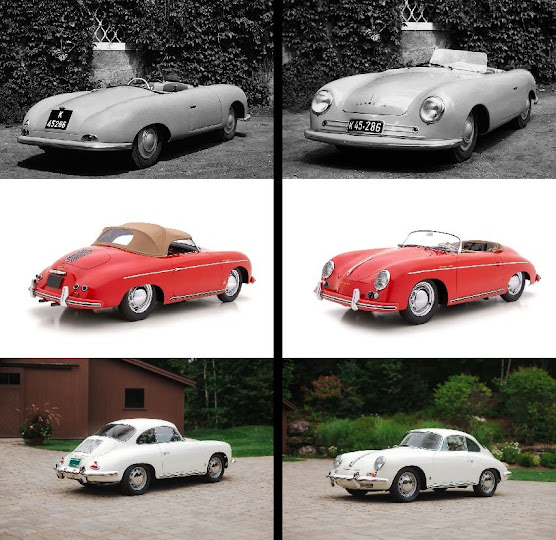Bathtub (pronounced bath-tuhb or bahth-tuhb)
(1) A tub in which to bathe, variations including permanent
installations (either built-in fixtures or free-standing units) in a bathroom
and (now less commonly in the developed world) portable constructions
(historically of metal or timber although for military and outdoor use,
foldable bathtubs (of leather or canvas) have a long history).
(2) An automotive style (most common in the 1950s) in which
the bodywork resembled an upturned bathtub.
1825–1835: The construct was bath + tub and the previous related
word was “wash-tub”, dating from the turn of the seventeenth century. Bath was from the Middle English bath & baþ, from the Old English bæþ
(bath), from the Proto-West Germanic baþ,
from the Proto-Germanic baþą (bath),
from the primitive Indo-European root bhē-
(to warm). The corresponding inherited verbs were bathe
& beath. The Old English bæð (“an immersing of the body in water,
mud, etc” or “a quantity of water etc., for bathing”) was from the Proto-Germanic
badan (the source also of the Old
Frisian beth, the Old Saxon bath, the
Old Norse bað, the Middle Dutch bat and the German Bad), also from the primitive Indo-European root bhē- with the appended –thuz (the Germanic suffix indicating “act,
process, condition” (as in “birth”; “death”)). The etymological sense is of
heating, not immersing. Tub was from the
late fourteenth century Middle English tubbe
& tobbe (open wooden vessel
made of staves), from the Middle Dutch & Middle Flemish tubbe or the Middle Low German tubbe & tobbe, of uncertain origin.
Etymologists have concluded there’s no link with the Latin tubus or the English tube but it was
related to the Old High German zubar (vessel
with two handles, wine vessel) and the German Zuber. In the seventeenth
century tub was slang for “pulpit”, thus since the 1660s a “tub-thumper” was a
particularly forceful preacher who literally “thumped his fists on the pulpit”
to emphasize some point; the use was later extended beyond the church to
politicians and others who spoke in a loud or dramatic way. The English city in the county of Somerset (in
Old English it was Baðun) was so
called from its hot springs. The
convention now probably is to refer to any permanently installed unit as a “bath”,
a bathtub something portable. The word
can appear both as bath tub and bath-tub.
Bathtub is a noun and bathtubby is an adjective (bathtubesque &
bathtubbish (resembling or characteristic of a bathtub) were jocular
constructions); the noun plural is bathtubs.
A “bathtub cockpit” is a cockpit with recessed
seating, so that a pilot or driver is sitting in a bathtub-shaped space. It was often seen in aircraft but the classic
example was that used in the delicate, cigar-shape voiturettes built to contest
the Formula One World Championship during the 1.5 litre era (1961-1965). The bathtub curve is a concept from reliability
engineering, describing a particular form of the hazard function taking into
account three categories of failure rate.
As a theoretical model it assumes the shape of a bathtub (sectioned in
the middle and viewed from the side), the three regions being (1) a decreasing
failure rate due to early failures, (2) a constant failure rate due to random
failures and (3) an increasing failure rate due to wear-out failures. The slang term “bathtub gin” is a US prohibition
era (1919–1933) term to refer to a gin (or other spirit) of such dubious
quality it suggests it may have been distilled by an unskilled amateur in their
bathtub. It’s a similar form to “gutrot”,
“moonshine” etc and was applied sometimes to any form of illicit alcohol and
not just distilled spirit. “Bathtub
racing” literally describes bathtubs being raced. One of sports more obscure niches, the
variations have included (modified) bathtubs being rowed or sailed on waterways
or raced on land (either powered, pushed or run on downhill courses. In economics, the “bathtub theorem” is the
charming illustration of the idea that capital accumulation = production -
consumption. The metaphor is that of the
water running from the taps (production) and that exiting from the plughole
(consumption). That seems obvious but
where the inflow is too great for the capacity of the plughole, the water in
the tub (capital) overflows, flooding the place, an elegant explanation of the
effects of over-production which can induce recessions or depressions.
In the intricate hierarchy of the UK’s honours system, The Most Honourable Order of the Bath is an order of chivalry dating from 1725 and the name really is derived from the use of a bathtub, the reference being to the medieval ceremony under which knighthoods were conferred, bathing being a symbol of purification. More than most British honours, the Order of the Bath has a tangled history, at times limited to the military and with various restrictions on the numbers of members. One thing which was once constant however was that recipients were entitled to the post-nominal letters “KB” after their name. This changed in 1815 when the order was re-organized into three classes: Knight Grand Cross (GCB), Knight Commander (KCB) & Companion (CB) and the transition was handled effortlessly by the experts but one thing which these days annoys those who worry about such things (and there are a few) is that inexpert journalists and others not do sometimes attach a KB to a Knight Bachelor. The Knight Bachelor actually attracts no post-nominal letters; it’s a kind of “entry-level” knighthood and recipients are not inducted as a member of one of the orders of chivalry (although there have been plenty of awards of the latter to those whose lives have been far removed from the chivalrous, not all of them from the colonies or Dominions). The Order of the Bath also provided one of the amusing anecdotes in the unpromising field of diplomatic protocol. In 1939, when Admiral Sir Reginald Aylmer Ranfurly Plunkett-Ernle-Erle-Drax KCB (1880-1967) was introduced at a ceremony in Moscow, protocol required his honors be read out in full, the Russian translator rendering his KCB as рыцарь умывальник (rytsar' umyval'nik) (Knight of the Wash Tub). The Russians honor guard couldn’t help but laugh and fortunately, the admiral shared their amusement.
In December 1917, the US satirist & critic HL Mencken (1880–1956) published a fictitious history of the bathtub. Intended as an amusing hoax, the story was so convincing that quickly it wildly was promulgated, appearing even in reference works and medical journals. Around a century later, a similar hoax was perpetrated when a university student edited the electric toaster’s Wikipedia page, claiming it had been invented by a wholly factitious Scottish scientist. The technique was exactly the same as Mencken’s: use the dry factual approach (ie the classic Wikipedia template) and it remained on-line for some years, presumably because the origin of the toaster is not a matter of great interest or controversy.
1949 Nash Ambassador (left), Evelyn Ay (1933–2008), Miss America 1954, in her “bathtub” Nash Rambler (the official car of the beauty pageant) (centre) and 1957 Nash Ambassador which still showed the legacy of the earlier, more extravagant bathtub styling cues.
The best remembered of the “bathtub” cars were first built
in the late 1940s by manufacturers introducing their first genuinely new
post-war lines (most of the cars produced in 1945-1946 were slightly updated
versions of those which had last been made early in 1942). Within the industry, engineers first called
the motif “envelope styling” but the more evocative (and certainly more
accurate because an up-turned bathtub came to mind more than an envelope) “bathtub” quickly became the preferred slang. Echoes of the lines which became familiar in
the next decade can be seen in some of the low-volume and experimental bodies seen
in the 1920s & 1930s, many an evolution of the realization the “teardrop”
shape was close to aerodynamically optimal (at least on paper, the implications
of lift and down-force then not widely understood). Among the large US manufacturers, Nash and
Hudson pursued the bathtub style to its most extreme and persisted the
longest. In the early 1950s, the
aerodynamic advantages were apparent and combined with the inherently good
weight-distribution afforded by their low-slung “step-down” construction, the
Hudson Hornet dominated NASCAR racing between 1951-1954, despite its straight-six
engine having both less power and displacement than some of the competition. Except for the odd quirky niche, the bathtub
styling didn’t make it into the 1960s and nor did the Nash & Hudson nameplates,
the former in 1954 absorbing the latter to created AMC (American Motor
Corporation) and in 1957, both brand-names were retired.
Evolution of the Porsche “bathtub” style 1948-1965, the lines of the original a direct descendant of a pre-war racing car. 1948 Porsche 356-001 (the Gmünd Roadster) (top), 1955 Porsche 356 pre-A 1500 Speedster (centre) and 1965 Porsche 356SC Coupé (bottom). Although the “bathtub” motif was abandoned with the end of 356 production, the 356’s contribution to the lines of the 911 (introduced in 1964 as the 901) is obvious and in the sixty-odd years since, stylistically, not much has changed.
%20Music%20Video%202005.jpg)















